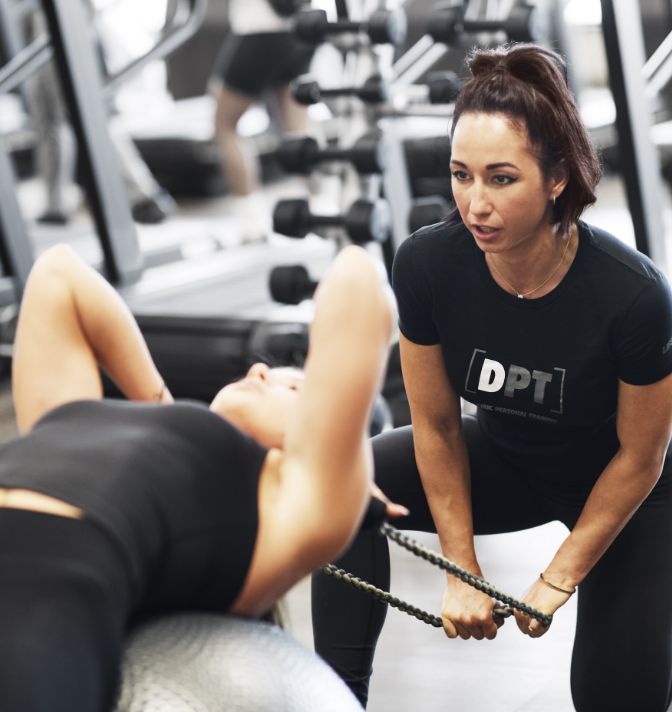Over more than 20 years, Experience Life has archived a treasure trove of information about exercise — all designed, as we state in “The Real-Fitness Manifesto”, “to empower you to build the kind of program that moves you toward your healthiest, happiest, most satisfying fit life.”
Typically, our approach to fitness does not include aesthetics. We don’t feature workouts that promise to change how you look, and there are a number of reasons for this philosophy:
- Despite widespread (and erroneous) messaging, what someone looks like is not an accurate representation of their health, or their value as a person.
- It’s easy for aesthetics-based goal-setting to prioritize one look, boxing out preferences that don’t fall within its narrow scope.
- Trendy ideals can be unattainable.
That said, aesthetic change is a real goal for many of you — and for me, too.
In my years as EL’s fitness editor, I’ve given a lot of thought to aesthetics-based goal-setting and how it fits in with the magazine’s broader philosophy, if it fits at all. Is the body’s physical response to exercise simply a side effect of training? Are aesthetics tangential to other benefits? Is it a lucky break if the result of your workouts squares with your idea of what looks good?
The truth is, exercise is a powerful tool for shaping and reshaping the body. Strength training, in particular, makes it possible to change how you look, sometimes significantly.
Like sculptors sitting in front
of a block of marble,
we have some control over the outcome.
Like sculptors sitting in front of a block of marble, we have some control over the outcome. And, like sculptors, we would do well to be careful, to make intentional choices so that one overzealous strike doesn’t sacrifice the larger work of art that is the human body. (Every human body.)
To this end, I’ve come up with a sort of checklist for myself. This set of questions gives me an opportunity to assess my goals and keep my greater well-being in sight.
If, like me, you’re navigating aesthetic goal-setting in this world that is dead set on imposing trends and ideals on our bodies, you may find it helpful, too. Take what resonates, make it your own, and leave what isn’t relatable.
- Am I pursuing this change because I feel pressured by some external force?
- Am I pursuing this change out of hatred of or disgust with a part or all of my body?
- Does pursuing this change jeopardize my health in any way?
- What is the cost (physical, mental, social, financial) of pursuing this change? Is success worth it?
- How would I feel if the goal I set turned out to be unattainable?
There are no right or wrong answers to these questions. But the answers do help me keep my head on straight.
For the sake of transparency, I’ll share: My goal the last couple of years has been to grow the size of my glutes and hamstrings. I could list many reasons — strength in these areas is good for my health, good for athletic performance, good for everyday life.
The reality is that I saw a bodybuilder on Instagram with a very developed posterior. I thought it looked amazing and told my coach I was curious to see how my body would respond to targeted hypertrophy training.
More recently, I had a similar moment on seeing an actress’s anterior deltoids: Her shoulders looked like beautiful boulders, and I once again wondered, Could I grow those?
In both cases, I was drawn to the goals by admiration and curiosity. In both cases, I wasn’t trying to erase a body I hated, and I didn’t feel emotionally attached to a particular outcome.
In both cases, I worked with my coach to make sure the rest of my programming worked my full body, ensuring some balance as I put more energy toward specific muscle groups.
And in both cases, I’ve been fascinated by, and happy with, my results. (It doesn’t matter to me if anyone else cares, approves, or even notices.)
Maybe you want a bigger derrière or boulder shoulders. Maybe you want six-pack abs or a thick keg of a torso. A body of steel or a softly padded frame. Or another look altogether. Whatever your desired outcome, I hope you can find a way to make it truly yours, to align its pursuit with your own healthy-life vision — however that may look.
This article originally appeared as “On Chasing a Look” in the January/February 2022 issue of Experience Life.






This Post Has 0 Comments